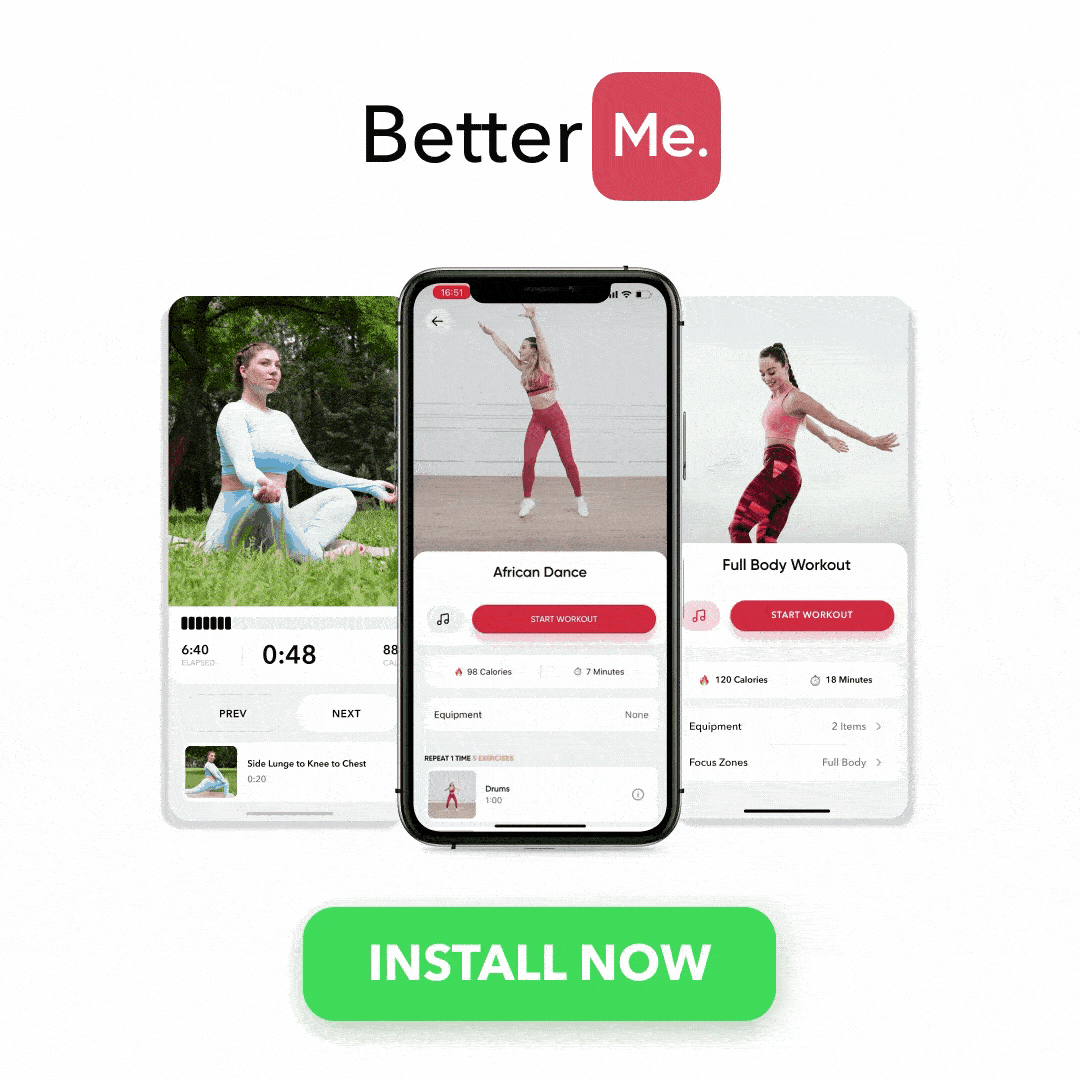Marathon training plans are nothing new. They’re everywhere, and they all work. The problem is that they’re too complicated for the average person to follow. This is especially true of beginning runners who don’t know yet how their bodies will react to running long distances.
There’s no need to make it hard on yourself when you can get a simple plan that doesn’t require any guesswork or anything more than your own willpower. Here is an easy-to-follow marathon training plan for beginning and intermediate runners just like you.
Beginner Marathon Training Plan 16 Weeks
This beginner marathon training plan is for anyone who wants to run a half or full marathon but has never trained before.
A successful 16-week plan requires dedication and determination because it will be one of the most difficult things you’ll ever do. The benefits are worth it though, as your body will change into that of an athlete through this intense training regimen. You’ll lose weight, build lean muscle mass, improve bone density, boost metabolism and endurance capacity (7).
Your training schedule can vary according to preference, just be sure to keep it consistent so you can track your progress throughout the weeks leading up to race day.
- Monday: Rest
- Tuesday: Run 30 minutes
- Wednesday: Strength workout (3 sets)
- Thursday: Run 30 Minutes
- Friday: Rest
- Saturday: Long run (at least 45 minutes)
- Sunday: Cross-training (swimming, biking)
BetterMe will keep you laser-focused on your weight loss journey! Nutrient-packed meal plans, fat-blasting workouts, galvanizing challenges and much more. Try using the app and see for yourself!
Intermediate Marathon Training Plan 16 Weeks
This marathon training plan is for runners who have already built up their running base. The intermediate training schedule builds on the beginner program above, continuing with increased mileage and more strength workouts.
- Monday: Rest
- Tuesday: Run 60 minutes
- Wednesday: Strength workout (5 sets)
- Thursday: Rest
- Friday: Run 65 minutes
- Saturday: Long run – 95 minutes
- Sunday: Rest
The key to this training schedule is to keep your muscles strong even though you’re doing less work than in previous weeks. While you’re still increasing your weekly distance, there are fewer rest days scheduled to maximize recovery time between runs. If you find yourself feeling more tired than usual, take a few rest days or a week to recover.
People who run three times a day will need to increase their calories slightly to compensate for the additional workouts. Try adding 100 calories per day, from healthy foods such as nuts, olive oil and bananas. By increasing your calorie intake you’ll stay focused on running four or five times per week instead of dropping down to three because you’re lacking energy (4).
If you’ve been training for a while now and have built up at least 20 miles per week it’s time to move onto a more advanced intermediate marathon training schedule. This requires more intensity, so going from beginner level straight into this plan may cause problems if you don’t give yourself enough time in between. Take a week or two to slowly increase your mileage so you don’t get injuries.
- Monday: Run 60 minutes
- Tuesday: Strength workout (5 sets)
- Wednesday: Rest
- Thursday: Run 60 minutes
- Friday: Strength workout (4 sets)
- Saturday: Long run – 90 minutes
- Sunday: Rest
Just like in the beginner marathon training plan, there are more strength workouts in this schedule. This is because runners who have progressed to an intermediate level need more cross-training to maintain their muscle mass and endurance (2). If you’re feeling strong, try adding an extra set to your strength routine or increasing the time you spend running each day.
As you can see, both of these marathon training plans are simple and straightforward. They don’t require any guesswork on your part, so you can focus on your running and not worry about the details. Just make sure to stick to the schedule and increase your mileage gradually so you don’t get injuries. And most importantly, have fun.
How Do I Know If I’m Ready to Run a Marathon?
You may be wondering what your body is really capable of and how you can tell if you’re ready for a marathon. You don’t want to sign up for one before you’re truly ready, only to become injured and end up disappointed.
Before you start training for a marathon, it’s important that your body is conditioned because running long distances takes its toll on the joints and tissues. To prepare yourself mentally and physically, build up your endurance first by starting out with shorter runs and working your way up (6).
It’s also essential that this gradual increase in mileage doesn’t cause any pain or discomfort. If something hurts during a workout or after, try easing off until it feels better before continuing. This will ensure that running won’t lead to an injury and you’ll be able to complete the marathon (6).
When you’re ready, it’s time to make a plan and get busy training. You can either use our beginner or intermediate schedules above depending on your previous running experience and fitness level. Or if you’re already running four times a week, put together your own schedule based on these examples.
Read More: How Long To Train For A Half Marathon: Tips To Help You Get Ready For The Next Race
How Long Does It Take to Prepare for a Marathon?
The answer to this question depends on how much time you can dedicate each week and your overall conditioning. A new runner will require more time than someone who has been training consistently over the past few months for their first half-marathon. However long it takes, we recommend giving yourself at least three months of solid training.
This way you won’t feel rushed and you can focus on your running without having to worry about completing all of the necessary long runs. Plus, it’s always a good idea to have some buffer time built in, in case something unexpected comes up.
Which Gear Do I Need During the 16 Week Marathon Training Plan?
No matter which marathon training plan you choose, one thing is for sure: You’ll need some essential gear to help make your training and race day as smooth as possible.
Here’s a list of the must-haves for any runner gearing up for a marathon:
- Running shoes: You’ll want to invest in a good pair of running shoes that are designed for your foot type. Make sure to try them on at a store and go for a run in them before making your purchase.
- Wicking fabric clothes: During long runs, it’s important to stay cool and comfortable. Wicking fabric helps pull sweat away from the body so you don’t feel weighed down or overheated.
- Gels, chews, and snacks: Marathon training takes a lot of energy, especially if you’re running long distances. Make sure to have some energy boosting snacks on hand during your runs.
- Hydration belt or handheld water bottle: Staying hydrated is key during any type of run, especially when training for a marathon. A hydration belt or handheld water bottle will help you stay hydrated without having to stop and take a break.
- Race day essentials: Once you’ve completed your marathon training plan and are race day ready, make sure to pack the essentials like sunscreen, hat, snacks, water, and your phone.
How Should I Eat To Fuel My Runs?
During the 16 weeks of this marathon training plan, and on race day, what you eat influences how well you run. Consuming the wrong foods can cause you to fatigue earlier and can negatively impact your performance.
Some diet advice for runners includes (4):
- Choosing whole, nutrient-dense foods for fueling your body like lean proteins, veggies, healthy fats, and complex carbs.
- Avoid foods that are heavy in fat or sugar (fried food, candy, chocolate) because they can cause an energy spike followed by a crash later on.
- Eating every 2-3 hours to keep your energy up throughout the day.
Here are some of the best marathon-training-friendly foods that will give you an energy boost (4):
- Bananas: Consume a banana before your run for instant fuel. Bananas digest quickly, which means they’ll be broken down and ready as energy as soon as you start running. They’re also great pre-workout because they provide quick energy without any crash later on.
- Oatmeal: Oatmeal is a runner’s best friend since it provides long lasting fuel due to its high fiber content. Stick with steel cut oats instead of old fashioned oats if possible since they take longer to digest, which will provide more sustained energy.
- Peanut butter: A little bit of peanut butter goes a long way in terms of providing energy for your runs. It’s a good source of protein and healthy fats that will help you power through those final miles.
- Granola bars: Granola bars make a great on-the-go snack since they’re packed with healthy carbs, fiber, and protein. Look for bars that have around 200 calories so you know you’re getting enough fuel without going overboard.
- Electrolyte-rich smoothies: Smoothies are a great way to hydrate before and after your runs. Make sure to include ingredients like coconut water, fruits, and vegetables that are high in electrolytes- which can help ward off cramps and fatigue.
- Sports drink: If you’re running for more than an hour, it’s a good idea to sip on a sports drink in order to replace the electrolytes you’re losing. Choose one that is low in sugar and has a light flavor so you don’t get sick of it during your run.
Reasons why BetterMe is a safe bet: a wide range of calorie-blasting workouts, finger-licking recipes, 24/7 support, challenges that’ll keep you on your best game, and that just scratches the surface! Start using our app and watch the magic happen.
How Do I Avoid Injury During Training?
Injuries are very common among runners, so it’s important to do what you can in order to avoid them. Taking a few precautions before and after your runs will help reduce your chances of injury (1):
- Make sure your running shoes have plenty of wear left on them if you plan on using the same pair for marathon training. If not, invest in a new pair that is designed specifically for long runs.
- Warm up before your run by jogging slowly, doing some dynamic stretching, and foam rolling. This way, you’ll loosen up muscles and get the blood flowing.
- Cool down after your run with some yoga stretches or foam rolling as well. This will help prevent muscle soreness post-run.
- Stay on top of your running form. Make sure to land softly on your feet, keep your stride long and lean slightly forward, and lift your knees with each step.
What’s The Best Way To Stretch Before and After A Run?
Stretching is an important part of any runner’s routine since it helps elongate the muscles and prevents injuries (5). However, there’s no one “right” way to stretch.
Here are a few basic stretches that you can do after your run:
- Hamstring stretch: Sit on the ground with both legs straight out in front of you. Reach for your toes with both hands and hold for 20 seconds.
- Quadricep stretch: Stand next to a wall and place your hands on it for support. Extend one leg back, keeping that knee bent at a 90 degree angle. Hold the position for 20 seconds, then repeat with the other leg.
- Calf stretch: Put both hands against a wall and step one foot out in front of you. Keep that heel down as you bend your back knee slightly, feeling the stretch in your calf muscle. Hold for 20 seconds, then switch legs.
- Butterfly stretch: Bring the soles of your feet together and let your knees fall open to each side in order to feel this full groin stretch. If this is too intense, bring your feet closer to you so they stay under your groin. Hold for 20 seconds.
- Lower back stretch: Put your hands on your lower back and bend forward to feel a deep stretch through this often tight area. Make sure your knees are bent in order to avoid straining them, hold for 20 seconds.
What if I Miss a Week of Training?
No matter how dedicated you are to your marathon training plan, there will inevitably be times when you have to miss a workout or two. It’s important not to get discouraged if this happens and instead try and make up the missed workout as soon as possible.
If you’re struggling to fit all of your runs in due to a busy schedule, consider doing speed workouts or cross-training on the days you can’t run. This will help you stay in shape and maintain your progress.
Read More: Athlete Workout Plan: How To Train Like A Pro
What to Expect on Race Day?
Race day is finally here and it’s time to put all of your hard work to the test!
Although every marathon is unique, there are some general things you can expect on race day.
Most importantly, be sure to arrive early enough so you have plenty of time to get situated and do a final warm-up. The last thing you want is to start the race stressed out and rushed.
The course will probably be marked with flags or cones, but it’s a good idea to familiarize yourself with the route ahead of time. This will help you avoid getting lost and allow you to pace yourself according to the terrain.
There will likely be water and electrolyte stations throughout the course, so make sure to take advantage of them. And finally, remember to have fun and enjoy the experience!
The Bottom Line
The 16-week marathon training plan is a great way to train for a half or full marathon. It builds up your endurance slowly so you’re able to complete the race without feeling exhausted. The best part is that anyone can do it, regardless of experience or fitness level. All you need is some dedication and determination, and eventually you’ll be an athlete through this intense training regimen.
DISCLAIMER:
This article is intended for general informational purposes only and does not serve to address individual circumstances. It is not a substitute for professional advice or help and should not be relied on for making any kind of decision-making. Any action taken as a direct or indirect result of the information in this article is entirely at your own risk and is your sole responsibility.
BetterMe, its content staff, and its medical advisors accept no responsibility for inaccuracies, errors, misstatements, inconsistencies, or omissions and specifically disclaim any liability, loss or risk, personal, professional or otherwise, which may be incurred as a consequence, directly or indirectly, of the use and/or application of any content.
You should always seek the advice of your physician or other qualified health provider with any questions you may have regarding a medical condition or your specific situation. Never disregard professional medical advice or delay seeking it because of BetterMe content. If you suspect or think you may have a medical emergency, call your doctor.
SOURCES:
- 6 Tips to Prevent Marathon Training Injuries (2019, clevelandclinic.org)
- Effect of Using Cross-Training on Improving Power Endurance, Aerobic Endurance and the Digital Records of Long-Distance Runners (2012, researchgate.net)
- International Society of Sports Nutrition Position Stand: nutritional considerations for single-stage ultra-marathon training and racing (2019, nih.gov)
- International Society of Sports Nutrition Position Stand: nutritional considerations for single-stage ultra-marathon training and racing (2019, nih.gov)
- The Effect of Static and Dynamic Stretching during Warm-up on Running Economy and Perception of Effort in Recreational Endurance Runners (2021, nih.gov)
- Training for a (half-)marathon: Training volume and longest endurance run related to performance and running injuries (2020, nih.gov)
- What to know about training for a marathon (2020, osu.edu)

















